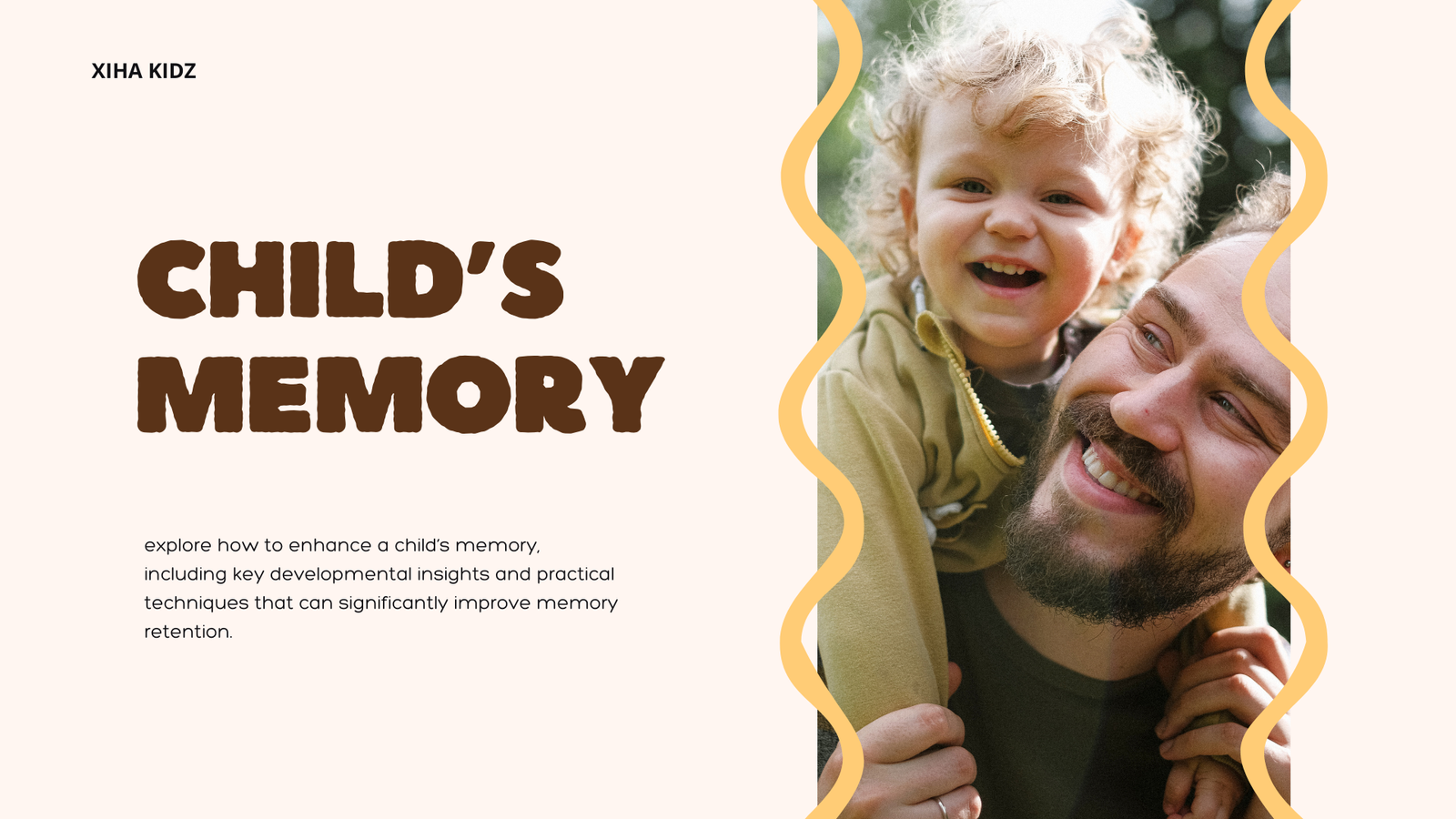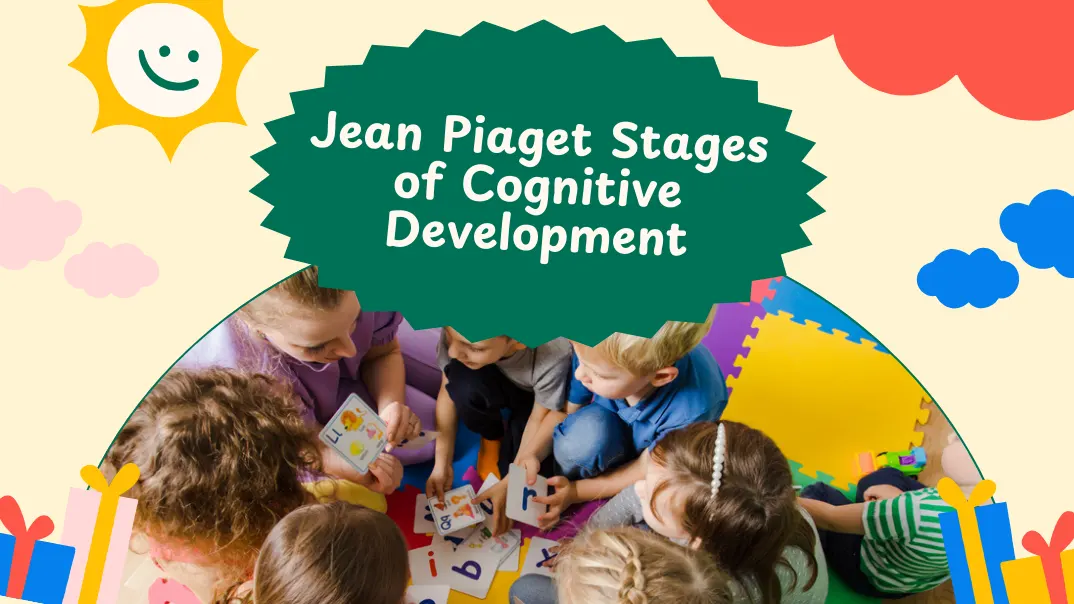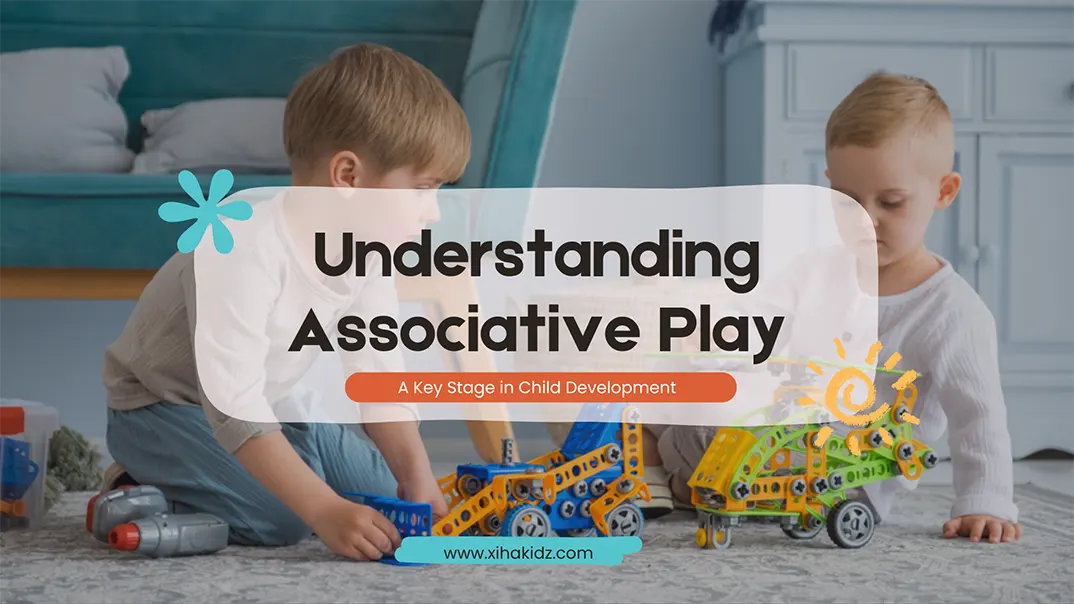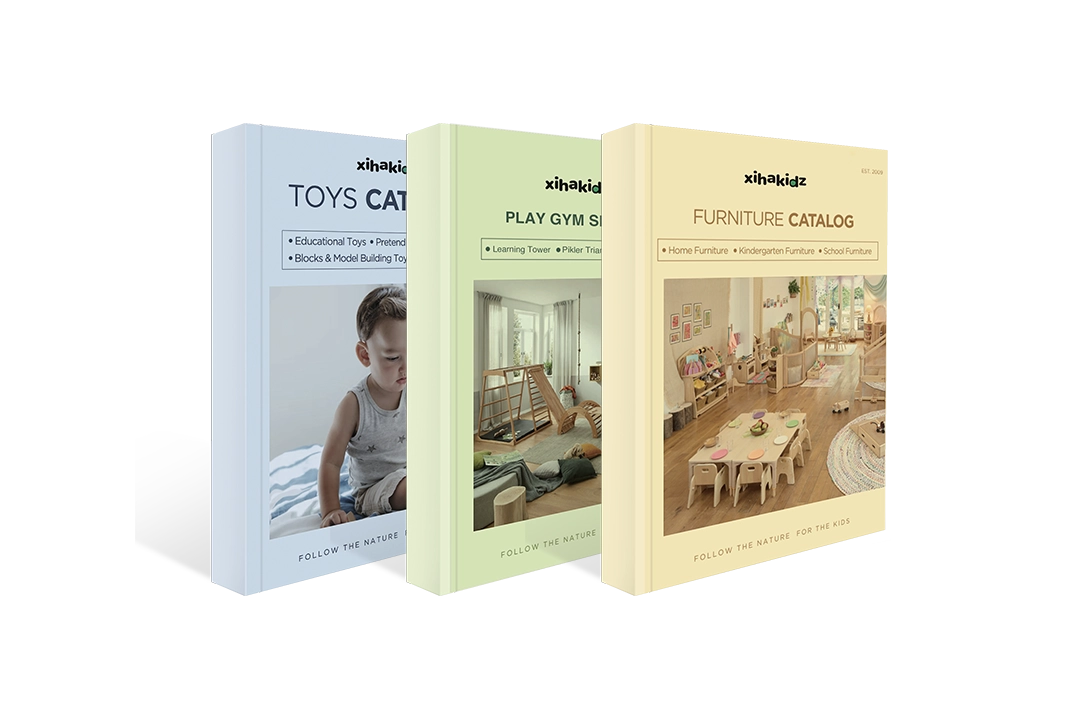Are you struggling to keep preschoolers engaged during circle time? With young children’s short attention spans, it can be challenging to plan entertaining and educational activities. But what exactly is circle time, and how can we make it more exciting while ensuring preschoolers develop crucial social, cognitive, and emotional skills? How do we strike the right balance between fun and learning in a structured, interactive setting?
Circle time is a key part of the preschool routine where children gather in a circle to participate in teacher-led activities. It’s an opportunity for young learners to engage, socialize, and develop foundational skills in a calm and organized environment. From singing songs to playing interactive games and engaging in educational exercises, circle time can be lively and enriching. With the right circle time activities, this time can stimulate creativity, enhance social interactions, and promote cognitive development, making it an essential part of any preschooler’s day.
Ready to make circle time the highlight of your preschooler’s day? Continue reading for various effective circle time activities to keep the kids engaged and excited to learn. Whether you’re a teacher, parent, or caregiver, these circle time ideas will bring fun and educational value to your children!
What Is Circle Time in Preschool?
Circle time in preschool is a structured and interactive activity where children gather in a circle to participate in various group activities. This time typically occurs at the beginning or middle of the day and is a staple of early childhood education. The circle format fosters community and inclusion among children, providing a safe and collaborative space for learning and social interaction.
The teacher usually leads the session during circle time, facilitating discussions, games, songs, or storytelling that promote cognitive and social skills. The setup of sitting in a circle helps break down the barriers between the teacher and the children, fostering an environment where everyone can participate equally, share ideas, and feel valued. This communal approach fosters peer relationships and encourages children to develop essential skills, including communication, listening, and teamwork.
Circle time can vary depending on the children’s age and attention spans, typically lasting 10 to 30 minutes. It is carefully planned to balance structured and free-form activities. Children can feel comfortable expressing themselves, asking questions, and learning through direct instruction and peer interaction in a well-organized circle time.
The Benefits of Circle Time Activities for Preschoolers
Circle time activities offer a wealth of benefits for preschoolers, promoting their overall development in various areas, including social, emotional, cognitive, and language skills. This structured interaction time plays a significant role in creating a well-rounded early childhood education experience. Below are some of the key benefits of circle time activities for young children:
1. Promotes Social Skills and Peer Interaction
Circle time fosters an environment where children can interact with their peers in a structured yet informal way. Sitting in a circle encourages kids to face one another, enhancing communication and cooperation. Preschoolers learn to take turns, share, and express their thoughts and feelings through circle time activities, such as greetings, songs, and discussions. These social skills are foundational for building friendships and functioning effectively in group settings, both in and out of school.
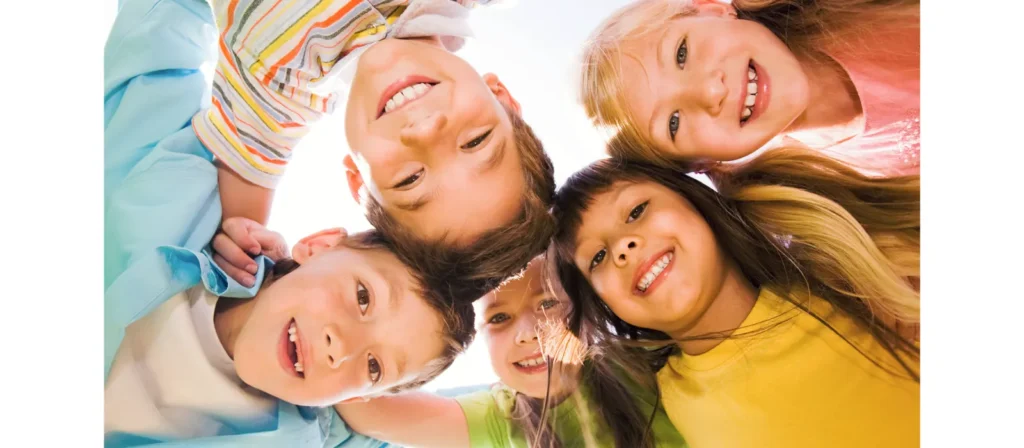
2. Encourages Active Listening and Focus
One of the most important skills that preschoolers develop during circle time is active listening. Since children are often called upon to respond to questions, participate in songs, or follow instructions, circle time helps them practice focusing their attention on the speaker. This practice strengthens their ability to listen carefully and follow directions, skills crucial for later academic success.
3. Develops Language and Communication Skills
During circle time, children are exposed to new vocabulary, sentence structures, and different forms of communication. Whether singing songs, telling stories, or engaging in discussions, circle time activities are rich in language opportunities. Children learn to express themselves clearly, ask questions, and engage in conversation. This interaction enhances their language skills, which are vital for social interactions and academic learning.
4. Enhances Emotional Development and Self-Regulation
Circle time offers an excellent platform for preschoolers to explore and express their emotions. Children begin to develop emotional intelligence by discussing their feelings, participating in games that involve emotional recognition, or listening to stories that evoke different emotions. They learn to identify and express their emotions in a healthy manner, which is essential for self-regulation and social competence. This can also improve their ability to empathize with others.
5. Promotes Cognitive Development
Circle time activities often involve problem-solving tasks, memory games, and discussions that help develop cognitive skills. Simple games that include numbers, colors, shapes, or patterns help preschoolers with basic math and literacy concepts. Storytelling and following group instructions enhance memory, attention span, and sequencing skills. Cognitive development during circle time lays the foundation for more advanced learning in school.
6. Builds a Sense of Routine and Structure
Preschoolers thrive on routine; circle time provides a predictable and structured part of their day. Knowing that circle time will follow a familiar routine provides children with a sense of security and helps them transition smoothly from one activity to another. This structured time boosts their confidence and helps them understand the importance of time management and following a set schedule.
7. Fosters Creativity and Imagination
Circle time activities such as storytelling, singing, and role-playing encourage creativity and imaginative thinking. As children engage in imaginative play, they start experimenting with various roles, scenarios, and narratives, thereby fostering cognitive flexibility. Creative circle time activities also allow children to think outside the box, helping them develop critical thinking and problem-solving skills in a fun and engaging way.
8. Strengthens Classroom Community
Circle time is an excellent way to build community within the classroom. It promotes inclusivity, where every child is invited to share their thoughts, feelings, and ideas. This group setting fosters a sense of belonging, as all children are equally valued and heard. Teachers can use circle time to reinforce positive behavior, introduce group norms, and emphasize the importance of mutual respect.
9. Encourages Positive Teacher-Child Relationships
The interactive nature of circle time enables teachers to form personal connections with their students. Teachers can engage with children directly, respond to their questions, and provide guidance in a nurturing way. This strengthens the teacher-child relationship, fostering trust and creating a safe and supportive classroom environment.
10. Supports Physical Development
Although circle time primarily focuses on social and cognitive growth, it can also support physical development. Activities incorporating movement, such as dancing, stretching, or simple finger games, engage preschoolers’ fine and gross motor skills. These circle time activities help children develop coordination, balance, and body awareness, which are important for overall physical health and readiness for future activities.
Key Elements of Successful Circle Time Activities
Circle time is a vital component of preschool routines, offering children a structured yet engaging environment in which to develop essential skills. To ensure circle time is both engaging and effective, it should include several key elements that promote learning, participation, and social interaction. Below are the core components that make circle time successful:
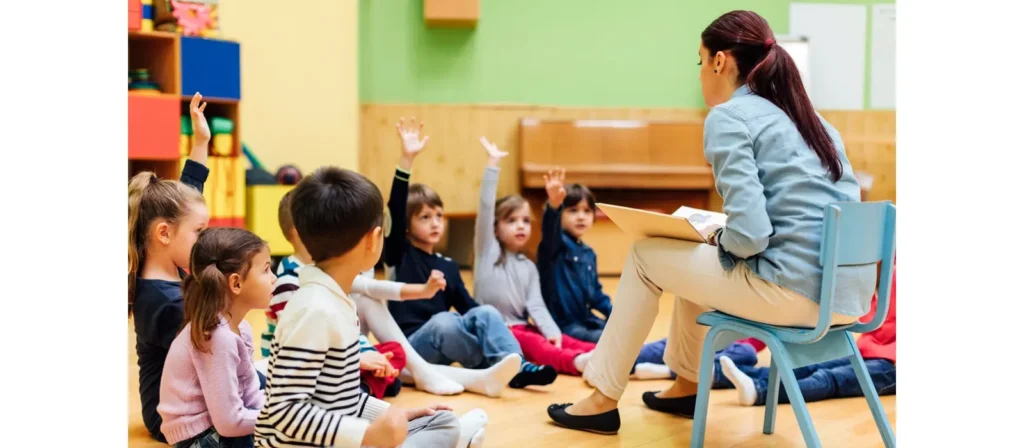
- Structure and Consistency: Circle time should have a fixed start and end time with a consistent flow of activities, providing children with a sense of security and predictability.
- Engagement and Participation: Activities should encourage active participation, such as singing, asking questions, role-playing, and promoting social skills to keep children engaged.
- Teacher’s Guidance: The teacher should guide the activities, encouraging participation, maintaining a positive and interactive atmosphere, and ensuring classroom order.
- Inclusive Participation: Ensure that every child has the opportunity to contribute to the learning process. The teacher should encourage children to share their thoughts and respect others.
- Visual and Sensory Support: Utilize visuals, props, and music to enhance the engagement of activities and facilitate children’s better understanding and retention of the content.
- Short and Focused Sessions: Circle time should be 10–20 minutes to match preschoolers’ attention spans, ensuring circle time activities are dynamic and maintain interest.
- Positive Reinforcement: Provide immediate praise and encouragement to boost children’s participation, confidence, and motivation.
What Topics Are Good to Discuss During Circle Time?
Circle time offers a valuable opportunity to engage preschoolers in meaningful discussions that foster emotional, social, and cognitive development. By selecting the right topics, you can help children better understand their feelings, relationships, and the world around them. Below are some essential categories for circle time discussions:
1. Emotions and Feelings
Talking about emotions is crucial for preschoolers’ emotional development. It helps them identify and express their feelings, building emotional intelligence. Discussing how children feel encourages self-regulation and empathy. Simple questions, such as “How are you feeling today?” or “What makes you feel happy or sad?” open up opportunities for children to communicate their emotions. Activities such as role-playing or reading books about emotions can also reinforce these discussions.
2. Friendship and Kindness
Teaching preschoolers about friendship and kindness is essential for their social development. Circle time is the perfect setting to discuss what makes a good friend, how to share, and how to resolve conflicts. It’s an opportunity to instill positive behaviors that children can practice both in the classroom and at home. Stories, songs, and role-play activities can be used to teach these important concepts.
3. Seasons and Weather
Discussing the seasons and weather is both engaging and educational for young children. Preschoolers love talking about the weather, which they experience daily. Discuss how the weather changes with the seasons, what clothing is appropriate, and how the weather affects what we do. This topic also allows for hands-on activities, such as creating weather charts or discussing animals that adapt to different seasons.
4. Daily Routines and Schedule
Routines help preschoolers feel secure and understand the structure of their day. Discussing the day’s schedule provides clarity and helps them transition smoothly from one activity to the next. You can discuss planned activities, like storytime, snack time, and outdoor play. This discussion helps children feel prepared and confident, creating a predictable and comfortable classroom environment.
5. Health and Safety
Health and safety topics are essential for young children to understand and practice in their daily lives. Circle time is an excellent opportunity to teach children about healthy habits, such as washing hands, brushing teeth, and eating nutritious foods. Discussing safety rules—like looking both ways before crossing the street or wearing a helmet when riding a bike—helps children learn the importance of caring for themselves and staying safe in various environments. You can also introduce emergency procedures to help children understand what to do in the event of an emergency.
6. Family and Community
Understanding family dynamics and community roles is key to a child’s social awareness. Discussing family members—what they do, who they are, and how they contribute—fosters a sense of belonging and appreciation for others. You can also discuss the various roles people play in the community, such as doctors, firefighters, and teachers. This helps children understand the importance of each person in their life and the broader community. These discussions promote inclusivity and empathy as children learn about different family structures and cultural traditions.
More Topics to Discuss:
- Animals and Nature: Discuss different animals, their habitats, and characteristics.
- Personal Experiences: Encourage children to share personal stories, which help develop language skills and foster social connections.
- Holidays and Special Events: Discuss upcoming holidays, traditions, and celebrations from various cultures.
- Learning about Colors, Shapes, and Numbers: Introduce foundational math concepts in a fun and interactive way.
- Good Manners and Etiquette: Teach preschoolers about polite behaviors such as saying “please” and “thank you,” waiting for their turn, and being respectful.
- Simple Science Concepts: Introduce basic science topics, such as the water cycle, plant growth, and the five senses.
Circle Time Activities & Ideas for Preschoolers
Circle time is a vital component of preschool, offering children opportunities to engage in learning, social interaction, and enjoyable activities that develop essential skills, including communication, cooperation, and attention. This section has compiled 40 creative circle time activities designed to captivate preschoolers’ imaginations, promote social-emotional growth, and support early childhood development, ensuring an exciting and enriching experience for all.
1. Emotion Charades
Activity Overview: Act out different emotions and have the children guess what they are.

Activity Instructions:
- The teacher or a child selects an emotion (e.g., happy, sad, angry).
- They express the emotion through facial expressions and body movements.
- The other children guess the emotion and then act out their feelings.
Child Development: This activity helps preschoolers develop emotional recognition and understanding by practicing the identification of different emotions through facial expressions and body language. It encourages children to express their feelings in a safe and supportive environment, helping them build empathy and self-awareness. And promoting social interaction by encouraging children to take turns and cooperate with their peers enhances their social skills.
2. Animal Movement Game
Activity Overview: Engage children physically and mentally by moving like different animals.

Activity Instructions:
- The teacher calls out different animals (e.g., “Hop like a frog!” or “Stomp like an elephant!”).
- Children move accordingly, imitating the movements of the animals.
- Encourage them to create their animal movements as well.
Child Development: The animal movement game strengthens gross motor skills by encouraging children to use their bodies in various ways, such as hopping, stomping, and stretching. This helps improve coordination and balance. The activity also sparks creativity as children make their movements and teaches them about different animals, expanding their knowledge of the natural world.
3. The Listening Game
Activity Overview: Strengthen listening skills through sound identification.

Activity Instructions:
- The teacher makes various sounds, such as clapping, ringing a bell, and imitating animal noises.
- Children close their eyes and guess what sound they hear.
- After each guess, encourage children to describe the sound.
Child Development: This activity boosts auditory discrimination and attention by requiring children to focus on specific sounds. It helps preschoolers develop better listening skills essential for effective communication. The activity also enhances memory as children recall and identify sounds, fostering cognitive development. As children describe what they hear, it promotes language skills and vocabulary expansion, further supporting their mental growth.
4. Freeze Dance
Activity Overview: Dance and freeze when the music stops to develop listening and self-regulation.

Activity Instructions:
- Play music and let the children dance around the circle.
- When the music stops, children must freeze in place.
- Resume the music and repeat the process several times.
Child Development: Freeze dance promotes listening skills and helps children learn self-regulation. Children practice controlling their impulses and improving their attention by listening carefully for the cue to stop. The physical movement encourages coordination and motor skill development. Additionally, the activity provides an outlet for energy, supporting social and emotional development as children engage in group play.
5. Story Time with Puppets
Activity Overview: Use puppets to engage children in a story and encourage participation.

Activity Instructions:
- The teacher uses hand puppets to tell a short, interactive story.
- Children can respond to the puppets by answering questions or mimicking actions.
- After the story, children can take turns using the puppets.
Child Development: Story time with puppets sparks imagination and creativity, as children visualize and engage with the characters. It helps develop language and narrative skills, allowing children to practice storytelling and communication. The interactive nature of the activity also promotes social engagement and cooperation.
6. Weather Discussion and Dance
Activity Overview: Discuss the weather and perform actions based on it.

Activity Instructions:
- The teacher asks the children about the weather (sunny, rainy, windy, etc.).
- Children then perform a dance or movement that reflects the weather (e.g., spinning like the wind, stretching arms like the sun).
- This can be combined with a weather-related song.
Child Development: Discussing the weather helps children develop language skills as they describe and understand natural phenomena. This activity also promotes physical engagement by encouraging movement that mimics the weather, assisting children to strengthen their gross motor skills. Understanding the weather and its impact on daily life also builds environmental awareness.
7. Color Mixing Fun
Activity Overview: Teach children about primary and secondary colors through a fun, hands-on activity.

Activity Instructions:
- Provide the children with primary colors (red, blue, yellow) and mixing tools (paint, colored water).
- Let the children experiment with mixing colors to create new ones.
- Ask them what happens when they mix red, yellow, and blue.
Child Development: This activity promotes cognitive development by teaching color theory and cause-and-effect relationships. It enhances fine motor skills as children manipulate materials and encourages creativity and problem-solving as they explore mixing colors.
8. Follow the Leader Game
Activity Overview: Improve coordination, listening, and attention with a fun game where children imitate the leader’s movements.

Activity Instructions:
- The teacher or a child becomes the leader and performs different movements.
- The other children follow along, copying the leader’s actions.
- Encourage children to take turns being the leader and create their movements.
Child Development: This activity enhances listening skills and following directions. It promotes gross motor development as children move their bodies in different ways. It also supports social skills by encouraging turn-taking and cooperation.
9. Animal Sound Match
Activity Overview: Match animal pictures with their corresponding sounds.

Activity Instructions:
- The teacher shows pictures of various animals (e.g., a cow, a cat, a dog).
- Play or make the animal sounds (moo, meow, woof) and ask the children to match the sound to the animal.
- Let children take turns making the animal sounds for their peers to guess.
Child Development: This activity helps children improve auditory discrimination and listening skills. It also supports language development as they associate words with sounds and animals. It encourages turn-taking and social interaction as children play together.
10. “I Spy” with Colors
Activity Overview: Play a color-based “I Spy” game to develop observation skills.

Activity Instructions:
- The teacher says, “I spy with my little eye something [color]” and provides hints to the children to help them guess the object.
- Children take turns saying “I spy” and describing something they see in the room using color.
- Discuss the objects and colors that are being identified.
Child Development: This game enhances color recognition and observation skills. It also fosters listening and turn-taking as children practice paying attention to the environment and responding appropriately.
11. Shape Sorting Game
Activity Overview: Sort objects by shape to help reinforce recognition and classification.

Activity Instructions:
- Provide children with mixed objects of various shapes (e.g., circles, squares, triangles).
- Children sort the objects into the correct shape categories.
- Discuss the properties of each shape and how they are alike or different.
Child Development: This activity supports cognitive development by encouraging children to recognize and classify shapes. It also promotes fine motor skills as children manipulate and sort the objects.
12. My Favorite Thing Sharing Circle
Activity Overview: Build communication and social skills as children share their favorite objects with the group.
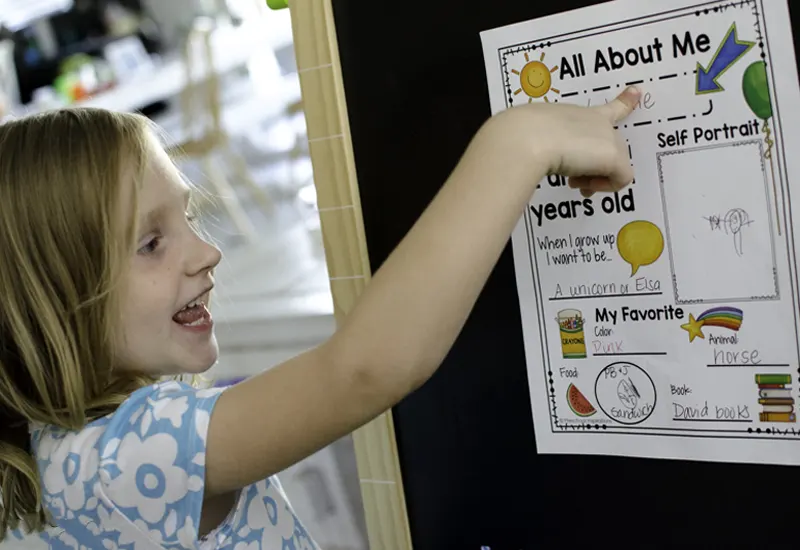
Activity Instructions:
- Have each child bring in or choose a favorite item.
- Ask them to circle and share the object with the group, explaining why it’s their favorite.
- Encourage other children to ask questions about each object.
Child Development: This activity supports cognitive development by encouraging children to recognize and classify shapes. It also promotes fine motor skills as children manipulate and sort the objects.
13. Colorful Movement
Activity Overview: Combine color recognition with physical movement through an active game.

Activity Instructions:
- The teacher calls out a color, and the children perform a corresponding movement (e.g., “Red means jump!” or “Blue means spin!”).
- Encourage them to move quickly and respond to different color cues as they practice.
Child Development: This activity strengthens color recognition while promoting physical activity and gross motor skills. It also improves attention and coordination as children follow the color-movement cues.
14. Counting with Nature
Activity Overview: Practice counting using natural objects, such as leaves, rocks, or sticks.

Activity Instructions:
- The teacher collects a small set of natural objects (e.g., five leaves or sticks).
- Ask the children to count the objects as they touch each one.
- Discuss the colors, sizes, and types of objects while counting.
Child Development: This activity encourages counting skills and helps children connect mathematical concepts to the natural world. It also supports fine motor development as children handle objects.
15. Storytelling with Flashcards
Activity Overview: Use flashcards to create a collaborative story.

Activity Instructions:
- The teacher shows a flashcard with an image (e.g., a tree, a dog, a house).
- The children add a sentence to the story based on the flashcard.
- Continue until the story is complete.
Child Development: This activity boosts imagination, creativity, and language skills. It also encourages turn-taking and helps children develop their narrative and sequencing abilities.
16. Simple Yoga for Kids
Activity Overview: Practice basic yoga poses to improve flexibility and mindfulness.

Activity Instructions:
- Introduce children to simple yoga poses such as “tree pose,” “downward dog,” and “cat-cow.”
- Lead children through the poses individually, encouraging them to focus on breathing and posture.
- Finish with a calming “resting pose” to help children relax.
Child Development: This activity promotes physical flexibility, balance, and mindfulness. It also encourages self-regulation and awareness of the body.
17. Rhythm Clap and Tap
Activity Overview: Practice rhythm through clapping and tapping.

Activity Instructions:
- The teacher claps or taps a rhythm on an object.
- Children repeat the rhythm by clapping or tapping along.
- Gradually increase the complexity of the rhythm and encourage children to clap to the beat of a song.
Child Development: This activity enhances rhythmic awareness, listening skills, and coordination. It also fosters memory and concentration as children repeat the rhythms.
18. Shape Creation Game
Activity Overview: Create shapes using the body to improve spatial awareness.

Activity Instructions:
- The teacher calls out a shape (e.g., “Make a circle!”).
- Children use their bodies to create shapes by arranging themselves in a circle.
- Discuss the shapes and their properties as the children form them.
Child Development: This activity enhances spatial awareness and shape recognition. It also promotes teamwork and cooperation as children form shapes together.
19. Shadow Play
Activity Overview: Explore shadows and light through simple experiments.

Activity Instructions:
- Use a flashlight to create shadows on the wall.
- Ask children to place their hands or objects in front of the light and observe the shadows they make.
- Discuss what shapes the shadows take and how they change.
Child Development: This activity supports cognitive development by teaching cause-and-effect relationships. It enhances understanding of light and shadow and encourages curiosity and observation skills.
20. Mystery Bag
Activity Overview: Explore mystery objects hidden in a bag to encourage curiosity and descriptive language.

Activity Instructions:
- The teacher places several objects inside a bag without showing them to the children.
- The children reach into the bag individually without looking at the objects.
- They describe what they feel and try to guess what the object is.
Child Development: This activity enhances tactile perception and descriptive language skills. It promotes vocabulary development and encourages curiosity and critical thinking.
21. Balloon Toss with Questions
Activity Overview: Toss a balloon and answer questions to foster social interaction and listening.

Activity Instructions:
- The teacher tosses a balloon to a child in the circle.
- The child who catches the balloon must answer a simple question.
- After answering, the child tosses the balloon to another child, and the process continues.
Child Development: This activity promotes active listening, social skills, and language development. It also encourages turn-taking and helps build self-confidence when speaking to others.
22. Letter Detective
Activity Overview: Hunt for letters in the environment to enhance letter recognition.

Activity Instructions:
- The teacher calls out a letter (e.g., “Find something that starts with the letter B”).
- Children search around the room to find objects that start with the letter and share them with the group.
- Discuss the sounds that go with the letters.
Child Development: This activity supports literacy by improving letter recognition and phonemic awareness. It also enhances observational skills as children explore their environment.
23. Sensory Sound Bottles
Activity Overview: Create sound bottles to explore various sounds through a sensory experience.

Activity Instructions:
- Fill bottles with various materials (e.g., rice, beads, water, and bells) to create different sounds.
- Children take turns shaking the bottles and describing the sounds they hear.
- Discuss how the different materials inside the bottles affect the sound.
Child Development: This activity enhances auditory sensory processing. It promotes descriptive language skills as children articulate what they hear and experience.
24. Simon Says
Activity Overview: Follow the teacher’s commands only if they say “Simon says” first.

Activity Instructions:
- The teacher gives commands such as “Simon says jump up.”
- Children must only follow the command if the teacher says, “Simon says” before it.
- If the teacher does not say “Simon says,” and a child follows the command, they are out of the round.
Child Development: This game enhances listening skills, self-regulation, and focus. It also strengthens body awareness and promotes gross motor skills as children follow physical commands.
25. Balloon Animals
Activity Overview: Teach children to make simple balloon animals for creative play.

Activity Instructions:
- Show the children how to twist and shape a balloon into simple animals.
- Allow children to try making their balloon creations or help them as needed.
- Discuss the animals they create, reinforcing animal names and characteristics.
Child Development: This activity strengthens fine motor skills and hand-eye coordination. It also fosters creativity and introduces new vocabulary related to animals.
26. Opposites Game
Activity Overview: Learn opposites through movement and actions.

Activity Instructions:
- The teacher calls out pairs of opposite actions (e.g., “Jump up and crouch down”).
- Children follow the commands, moving to show understanding of the opposites.
- Mix up the opposites with creative movements to keep the game engaging.
Child Development: This activity strengthens cognitive development by teaching concepts of opposites. It also supports physical development through movement and helps with listening comprehension.
27. Pass the Appreciation
Activity Overview: Show appreciation for others in a fun and interactive way.

Activity Instructions:
- The teacher begins by expressing appreciation for one child.
- The child who is appreciated then passes the appreciation to another child by saying something kind about them.
- Continue passing the appreciation around the circle until everyone has received and given a compliment.
Child Development: This activity promotes positive social behavior, boosts self-esteem, and teaches children to appreciate others. It fosters kindness, gratitude, and empathy.
28. Rhyme Time
Activity Overview: Recite nursery rhymes to help children develop phonological awareness.

Activity Instructions:
- The teacher recites a nursery rhyme (e.g., “Twinkle, Twinkle, Little Star”) and encourages the children to repeat after them.
- Ask children to identify rhyming words in the rhyme.
- Let children come up with their own rhyming words or complete lines of the rhyme.
Child Development: This activity supports language development, specifically phonological awareness. It strengthens children’s listening skills and helps them recognize sounds and rhyming patterns.
29. Show and Tell
Activity Overview: Encourage children to bring an item from home and share it with the class.

Activity Instructions:
- Each child takes turns bringing an item to circle time to talk about.
- Encourage children to describe the item (e.g., “This is my favorite toy because…”).
- Allow time for questions and comments from peers to promote interaction.
Child Development: Show and Tell builds communication skills, confidence, and social interactions. It encourages children to speak in front of a group and practice listening to their peers.
30. Number Hunt
Activity Overview: Search for numbers in the classroom to improve number recognition.

Activity Instructions:
- The teacher hides number cards (1-10) around the classroom.
- Ask the children to search for the cards and return them to the circle.
- Once they find the number, they practice counting out loud.
Child Development: This activity encourages number recognition and counting. It also develops observational and problem-solving skills as children search for the hidden numbers.
31. Group Breathing Exercise
Activity Overview: Practice deep breathing to help children relax and focus.

Activity Instructions:
- Teach children a simple breathing exercise.
- Encourage children to breathe in deeply through their nose and exhale slowly through their mouth.
- Repeat several times, encouraging children to focus on their breathing.
Child Development: This activity helps children develop self-regulation skills and emotional control. It also promotes relaxation and mindfulness, essential for managing emotions and stress.
32. Nature Sound Orchestra
Activity Overview: Use natural items to create music and creatively explore sound.

Activity Instructions:
- Gather natural items (e.g., leaves, stones, sticks, and pinecones).
- Teach children to create different sounds by tapping, shaking, or rubbing the items.
- Have a mini “orchestra” where children can make music together, experimenting with the sounds.
Child Development: This activity promotes auditory discrimination and creativity. It helps with fine motor skills and introduces children to rhythm and sound production.
33. The Counting Cup Challenge
Activity Overview: Count objects in cups to practice numbers and counting skills.

Activity Instructions:
- Place a set number of small objects (e.g., buttons, beads) in cups.
- Ask children to count how many objects are in each cup.
- Increase the difficulty by asking them to add or subtract objects to match a given number.
Child Development: This activity enhances number recognition, counting, and one-to-one correspondence. It also promotes fine motor skills as children handle the objects.
34. Emotion Wheel
Activity Overview: Use an emotion wheel to express and discuss different feelings.

Activity Instructions:
- The teacher spins an emotion wheel with various emotions (e.g., happy, sad, excited, frustrated).
- When it lands on a specific emotion, the teacher asks the children to share a time they felt that way.
- Children may also act out emotions for others to guess.
Child Development: This activity helps children understand and express their emotions. It encourages emotional vocabulary and builds empathy as they hear from their peers.
35. Storybook Charades
Activity Overview: Act out scenes from a favorite storybook to enhance comprehension and creativity.

Activity Instructions:
- The teacher chose a familiar storybook.
- Children take turns acting out a scene from the story while others guess which part of the story it is.
- Discuss the emotions, actions, and characters involved in the scenes.
Child Development: This activity enhances comprehension, creativity, and social interaction. It also promotes imagination and understanding of narrative structure.
36. Jump the Number Line
Activity Overview: Jump along a number line to practice counting and number recognition.

Activity Instructions:
- Increase the difficulty by asking children to jump to a number 2 more or less than the current number.
- Place numbers in a straight line on the floor or ground, such as 1-10.
- Children take turns jumping from one number to another as the teacher calls out a number.
Child Development: This activity strengthens number recognition, counting, and gross motor development. It also encourages listening and improves physical coordination.
37. Animal Memory Match
Activity Overview: Match animals and their sounds to strengthen memory and cognitive skills.

Activity Instructions:
- The teacher prepares cards with pictures of animals and matching sound cards.
- Lay the cards face down in a grid.
- Children take turns flipping over two cards at a time, trying to match the animal with its corresponding sound.
Child Development: This activity improves memory, concentration, and cognitive skills. It also strengthens animal recognition and auditory discrimination as children match the animals to their sounds.
38. Pass the Object
Activity Overview: Pass an object around the circle while practicing listening and self-control.

Activity Instructions:
- The teacher hands the first child a small object (e.g., a ball or a soft toy).
- As the object is passed around, the teacher calls out a specific instruction (e.g., “Pass the object while hopping”).
- When the object reaches the last child, they get to give new instructions for the next round.
Child Development: This activity promotes listening and focus. It also encourages gross motor development as children follow instructions involving movement.
39. Musical Chairs with a Twist
Activity Overview: A fun variation of the classic musical chairs game, where children walk around chairs and freeze when the music stops.

Activity Instructions:
- Arrange chairs in a circle, with one less chair than the number of children.
- Play music and have the children walk around the chairs.
- Children must quickly find a chair to sit in when the music stops.
- Remove one chair after each round and repeat until only one chair remains.
Child Development: This activity promotes listening skills, coordination, and social interaction. It also encourages turn-taking and fosters friendly competition.
40. What’s Missing?
Activity Overview: A memory and observation game where children work on focus and recall skills by identifying missing objects.

Activity Instructions:
- Remove one object and ask the children to guess which one is missing.
- Place a few objects in the circle’s center and have the children observe them.
- Ask the children to close their eyes or turn around for a moment.
Child Development:
This activity improves memory, attention to detail, and cognitive skills while encouraging turn-taking and group interaction.
Circle Time Activities for Special Needs Preschoolers
Circle time is essential to a preschooler’s routine and can benefit children with special needs. These activities promote social interaction, emotional regulation, communication, and cognitive development while ensuring a supportive and inclusive environment.
Sensory Exploration
Activity Overview: Engage children’s senses with tactile materials to promote sensory processing and communication.
Activity Instructions:
- Set up a sensory tray with different materials such as textured fabric, soft toys, or sensory balls.
- Children take turns reaching into the tray and feeling the materials, then describing what they think using simple words (e.g., “soft,” “rough,” “smooth”).
- Encourage children to pass the materials around the circle and share their sensory experiences.
Child Development:
This activity helps children with sensory processing difficulties by allowing them to explore and identify different textures. It also improves communication, language development, and social interaction as children describe their feelings and share their experiences.
Visual Schedule with Picture Cues
Activity Overview: Utilize a visual schedule to assist children in following their routine and reduce anxiety.
Activity Instructions:
- Create a picture-based schedule showing the different activities for the day (e.g., story time, snack, playtime).
- As the teacher moves through each activity, they refer to the visual schedule to show what’s coming next.
- Encourage children to interact with the schedule by pointing to or touching the pictures when it’s time to move on to a new activity.
Child Development:
This activity provides structure and predictability, which can be especially helpful for children with autism or those who struggle with transitions. It promotes independence and helps children feel secure by enabling them to understand the daily routine.
Emotion Cards and Discussion
Activity Overview: Use emotion cards to help children understand and express different feelings.
Activity Instructions:
- The teacher shows cards with pictures of faces representing different emotions (happy, sad, angry, surprised, etc.).
- The children are asked to identify the emotion on the card and discuss a time they felt that way or how they would act in that situation.
- Encourage children to make facial expressions corresponding to the card’s emotion.
Child Development:
This activity helps children recognize and label emotions, promoting emotional regulation. It is particularly beneficial for children who struggle to identify or express their feelings, fostering empathy and social-emotional skills.
Turn-Taking with Toys
Activity Overview: Practice turn-taking and sharing with simple toys or objects to develop social skills.
Activity Instructions:
- Set up a circle with toys or objects children can interact with (e.g., dolls, blocks, or fidget toys).
- The teacher guides the children to take turns playing with each item, encouraging phrases like “My turn” and “Your turn.”
- Model appropriate sharing behavior and praise children for waiting their turn.
Child Development:
This activity focuses on social skills, specifically turn-taking and sharing. It promotes patience and communication, essential skills for preschoolers with special needs who may struggle with social interactions.
Entdecken Sie unsere gesamte Produktpalette
Erhalten Sie Zugang zu unserem umfassenden Katalog mit hochwertigen Möbeln und Spielgeräten für Kindergärten und Schulen.
Interactive Circle Time Songs for Preschoolers
Circle time songs are a fun and engaging way to help preschoolers develop essential skills, including language, motor coordination, and social interaction. Here’s a list of great interactive songs that can be used during circle time to keep children entertained and learning.
- “If You’re Happy and You Know It”
- “Head, Shoulders, Knees, and Toes”
- “The Wheels on the Bus”
- “Shake Your Sillies Out”
- “If You’re a Tiger and You Know It”
- “The Hokey Pokey”
- “Old MacDonald Had a Farm”
- “This Is the Way We Wash Our Hands”
- “Five Little Ducks”
- “Trot, Trot to Boston”
- “Twinkle, Twinkle, Little Star”
- “I’m a Little Teapot”
- “Rainbow Song”
- “Bingo”
- “Zoom, Zoom, Zoom, We’re Going to the Moon”
How to Transition into and Out of Circle Time
Transitions are essential in preschool, especially when moving into or out of circle time. A smooth transition can help children feel secure, ready to participate, and better prepared for the next activity. Here are some effective strategies to ensure these transitions are seamless and less stressful for children.
- Use a visual schedule to show upcoming activities and help children prepare for circle time.
- Use familiar songs or sounds to signal the start and end of circle time, like “It’s circle time!” or “Time to say goodbye!”
- To help children mentally prepare for the change, give a 5-minute warning before transitioning to circle time or ending it.
- Provide calming tools like fidget spinners or soft toys to help children manage overstimulation during transitions.
- Establish a predictable routine for circle time so children know what to expect and feel secure.
- Offer praise or rewards for children who cooperate during transitions, encouraging smooth and positive behavior.
- Keep transitions short and calm to prevent overwhelming children and maintain their focus.
Tips to Keep Your Kids Engaged During Circle Time Activities
Circle time is crucial in a preschooler’s development, fostering social skills, cognitive growth, and emotional expression. However, keeping children engaged during circle time can be challenging due to their limited attention spans. Effective strategies encouraging participation, movement, and variety can create a dynamic and engaging learning environment. Here are some practical tips to help keep kids excited and focused during circle time.
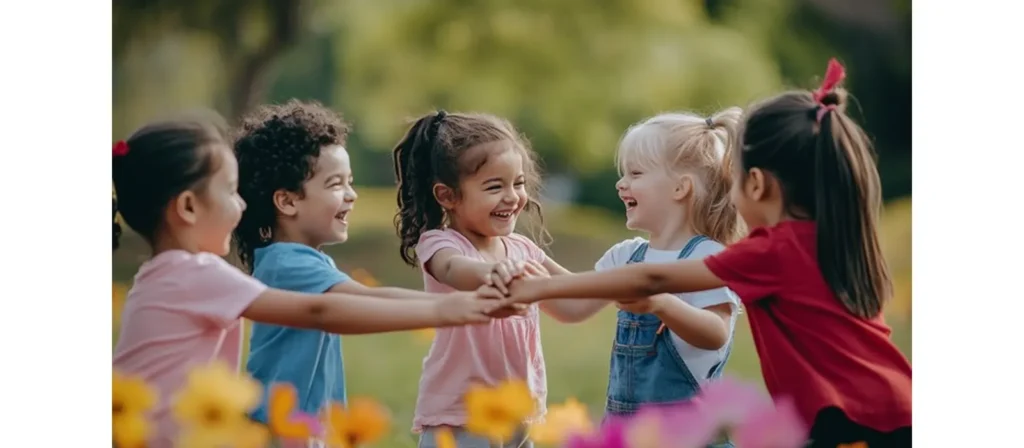
Provide Clear, Simple Instructions
Preschoolers thrive on clarity and simplicity, especially when following instructions. Break tasks down into easy-to-follow steps and keep your directions short and precise. Instead of saying, “Let’s clean up the room and get ready for the next activity,” try, “First, let’s pick up the toys, then we’ll sit down for circle time.” Simple instructions help children understand precisely what is expected of them, making staying focused and on task easier.
Keep It Varied and Exciting
To maintain interest, switch up activities regularly. Children can lose focus if they do the same thing repeatedly, so introduce various activities during circle time. Start with a song, follow it with a short story, then incorporate a movement activity or hands-on task. This variety keeps kids excited and engaged, as they never know what’s coming next.
Get Them Moving and Active
Preschoolers have lots of energy, so incorporating movement is crucial. Physical activities like dancing, hopping, or jumping along with songs help children release energy in a fun and productive way. For example, songs like “Head, Shoulders, Knees, and Toes” or “If You’re Happy and You Know It” encourage children to move while learning. Movement helps with energy regulation and enhances motor skills and concentration.
Use Props and Visuals to Capture Attention
Props and visuals are excellent tools for keeping children’s attention during circle time. Use puppets, picture cards, or themed objects to support your lesson or storytelling. For example, when reading a story, use a puppet to act out the characters or flashcards to reinforce concepts like colors or shapes. Visuals make the lesson more engaging and help children connect what they’re learning to what they see.
Make It Interactive and Engaging
Active participation is key to maintaining focus. Ask open-ended questions, invite children to contribute to the discussion, and let them take part in activities. For instance, ask children to choose the following action or word when singing a song. Allowing them to be part of the process keeps them involved and excited about circle time, and gives them a sense of control and ownership.
Incorporate Sensory Experience
Children learn through their senses, so incorporating sensory elements into circle time helps keep them engaged. Sensory activities—such as passing around textured objects, using sound effects, or introducing scented materials—can make learning more immersive and fun. For example, let children feel soft scarves during a calming song, or use a sensory bin for an exploration activity. Engaging multiple senses helps reinforce learning and keeps children focused.
Keep Sessions Brief and Dynamic
Short, dynamic sessions are most effective for young children. Since preschoolers typically have short attention spans, keep activities to 10–15 minutes each and switch to a new activity or change the pace when needed. Transitioning quickly from one task to another keeps children from losing interest and ensures they remain engaged throughout the session.
Offer Positive Reinforcement
Positive reinforcement motivates children to stay engaged and encourages them to participate. Praise them when they follow instructions, stay on task, or contribute to the activity. A simple “Great job!” or “I love how you’re following the directions!” boosts their confidence and excites them to participate in the next task. Positive feedback helps build a supportive and encouraging environment during circle time.
Follow Their Lead and Interests
Pay attention to the children’s interests and cues, and follow their lead during circle time. If a child seems particularly excited about a topic or activity, give them more time to explore it. You can ask them questions or expand on what they’re interested in. Letting children guide some parts of the session makes them feel involved and valued, which boosts their engagement and enthusiasm.
Creating a Positive Environment for Circle Time Activities
The physical environment where circle time occurs is crucial for children’s engagement and comfort. A well-organized, inviting, and stimulating space can make all the difference in fostering a positive atmosphere that encourages participation and focus. Here are key strategies for setting up an ideal space for circle time that supports learning and interaction.
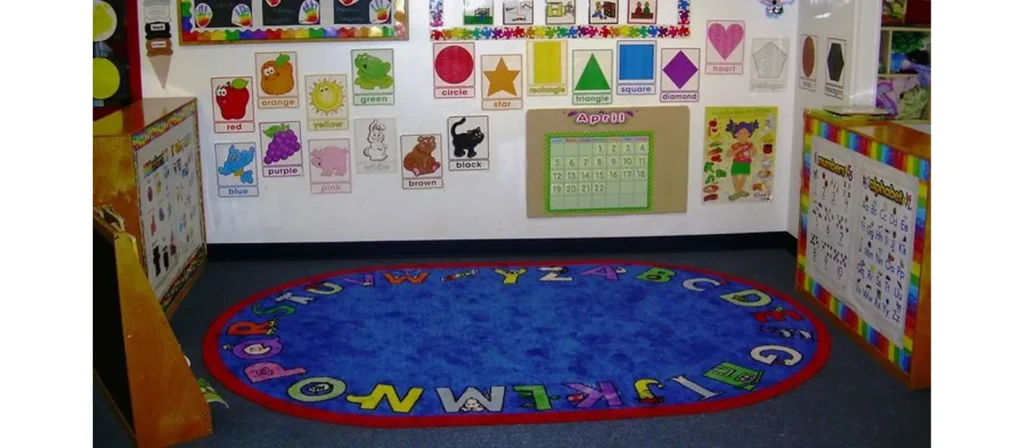
1. Arrange Seating for Inclusivity and Comfort
The seating arrangement is essential for creating a welcoming and collaborative atmosphere. Arrange chairs or mats in a circle or semi-circle to ensure that all children have equal access to the teacher and can see and hear the activities. This setup promotes equality and community, encouraging children to feel comfortable and included.
For younger children, use soft cushions or colorful circle-time carpets that are easy for them to sit on for extended periods. Consider rotating seating arrangements occasionally to allow children to interact with different peers.
2. Minimize Distractions in the Environment
A cluttered or overly stimulating environment can distract children and disrupt the flow of circle time. It’s essential to keep the circle time area free of excessive distractions, such as toys or loud visual displays that could divert the children’s attention. Create a clean, orderly space with a few strategically placed learning materials relevant to the activity.
Consider using quiet corners or low shelves for toys and materials not used during circle time. The circle time board is a great tool to display daily themes, activities, or rules, allowing children to follow along and feel more organized.
3. Use Color and Lighting to Set the Mood
Colors and lighting can significantly impact a space’s atmosphere. Soft, calming colors like pastel blues or greens can create a peaceful and relaxed environment, while bright colors like yellow or orange promote energy and excitement. Lighting is also essential—natural light is ideal, but if that’s impossible, use soft, warm lighting to create a welcoming and comfortable ambiance.
Decorate the circle time area with colorful, yet not overwhelming, artwork or learning posters that tie into the circle time themes for preschoolers you plan to cover.
4. Provide Comfort and Flexibility for Movement
While circle time is a structured activity, allowing room for movement and comfort is essential. Children may need to move around, stretch, or take breaks from sitting on the floor. Providing flexible seating options and encouraging occasional movement can help maintain focus and ensure children remain comfortable throughout the session.
5. Incorporate Natural Elements
Introducing natural elements into the circle time environment can be a calming and engaging way to connect children with the world around them. Plants, natural wood furniture, or even small objects like rocks, leaves, and flowers can create a more organic and grounded atmosphere. These elements enhance the space’s aesthetic and can be used for educational purposes, particularly when discussing circle time themes related to nature for preschoolers.
6. Establish Clear Boundaries
Clear boundaries help children understand where circle time begins and ends. Designate a specific area for circle time and use visual markers, such as circle time rugs, mats, or ropes, to define the space. This helps children focus on the activity and limits distractions when they wander around the room.
Verwandeln Sie Ihr Klassenzimmer mit individuellen Möbellösungen
Common Circle Time Challenges and Solutions
Circle time is essential in preschool, but it often presents challenges, especially with children who have different attention spans and needs. Below are common challenges that arise during circle time, along with practical solutions to help overcome them.
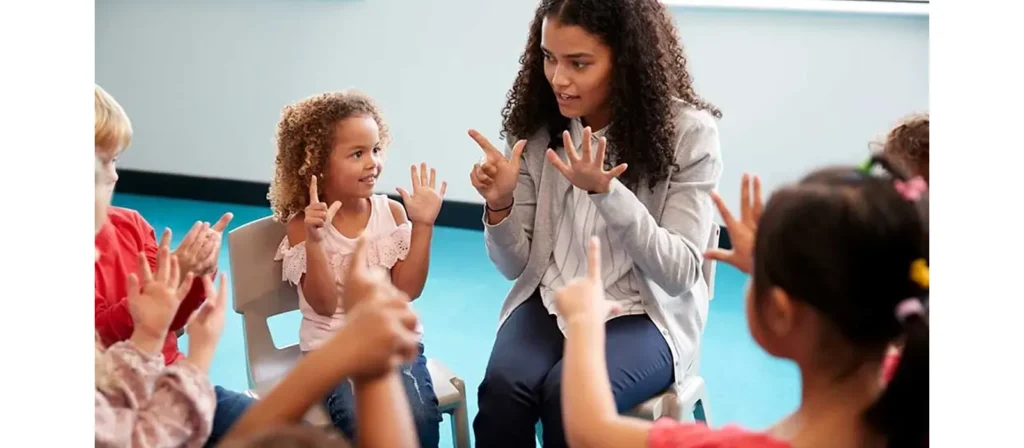
1. Short Attention Spans
Challenge: Children often struggle to maintain focus for extended periods.
Solution: Keep activities short and varied. Rotate between songs, stories, and activities every 10-15 minutes to keep kids engaged. Moving between different types of tasks helps maintain their attention.
2. Disruptive Behavior
Challenge: Some children may become disruptive or distracted during circle time.
Solution: Set clear expectations for behavior and model appropriate actions. Use positive reinforcement when children follow instructions and gently redirect disruptive behavior. Offer structured roles like “helper” to give children a sense of responsibility.
3. Difficulty with Transitions
Challenge: Children can struggle with moving from one activity to another.
Solution: Give a 5-minute warning before transitions and use songs or cues to signal changes. A visual schedule helps children anticipate what’s next, making transitions smoother.
4. Lack of Engagement
Challenge: Some children may seem uninterested or disengaged during circle time.
Solution: Make activities interactive by asking questions, allowing children to take turns, and using props like puppets or picture cards to bring the lesson to life. Encouraging participation helps children stay involved.
5. Sensory Overload
Challenge: Bright lights, loud sounds, or too many visuals can overwhelm some children.
Solution: Minimize distractions to create a calm, quiet environment. If children become overwhelmed, offer sensory breaks or utilize calming tools, such as stress balls. Keep lighting soft and sounds gentle to avoid overstimulation.
6. Difficulty Following Directions
Challenge: Some children may struggle to understand or follow instructions.
Solution: Use simple, clear instructions and break tasks into smaller steps. Pair verbal directions with visual cues to reinforce understanding. Model behaviors so children can see how to follow directions.
7. Social-Emotional Challenge
Challenge: Children with social or emotional difficulties may struggle to interact or express their feelings.
Solution: Use emotion cards or charts to help children identify and express their emotions. Model positive social interactions, such as taking turns and sharing, and praise positive behavior.
8. Limited Communication Skills
Challenge: Some children may struggle to articulate their thoughts and feelings.
Solution: Encourage communication through visual aids, sign language, or gestures. Praise any effort to communicate, and provide simple prompts to help children express themselves.
9. Limited Self-Regulation
Challenge: Some children may have difficulty controlling their emotions or behavior.
Solution: Teach calming techniques like deep breathing or stretching. Provide self-regulation tools such as fidget toys and offer positive reinforcement when children use them to stay calm and focused.
Schlussfolgerung
Circle time is a vital component of preschool education, providing a range of engaging activities that foster social, emotional, and cognitive development. The 40 ideas presented in this article offer a range of enjoyable and effective ways to keep preschoolers engaged. Whether through songs, games, or hands-on activities, these strategies help create a positive and interactive environment.
To enhance your circle time experience, Xihakidz offers a wide selection of materials and furniture designed specifically for circle time activities. From comfortable circle time carpets to educational toys, Xihakidz can help provide the materials you need to make your sessions fun and effective. With the right materials and structure, circle time can be a highlight of the preschool day.
Entdecken Sie unsere gesamte Produktpalette
Erhalten Sie Zugang zu unserem umfassenden Katalog mit hochwertigen Möbeln und Spielgeräten für Kindergärten und Schulen.



